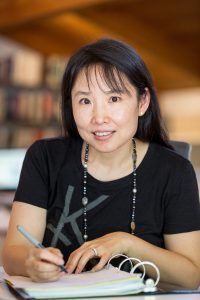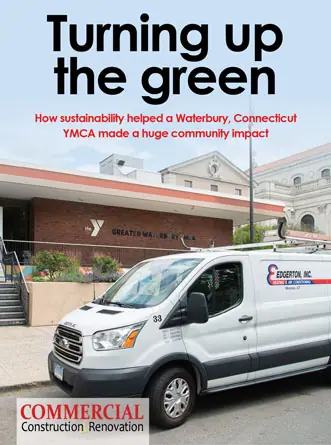
Sustainability efforts are increasingly common in the commercial real estate industry, with property owners and managers – along with their tenants – placing increased focus on incorporating design features that are environmentally sound while reducing energy consumption over the lifespan of a building.
Sustainable building has rapidly evolved in the last 20 years. The 2000 launch of the Leadership in Energy and Environmental Design (LEED) program – developed by the U.S. Green Building Council (USGBC) – changed the way buildings are designed, constructed, operated and maintained. More importantly, it changed people’s perception about green building. Today, about 33 percent of building projects in the US have green features, and by 2018 that number is expected to grow to about 50 percent.
While many property owners recognize the advantages of seeking LEED certification – including state/local incentives and marketing benefits – the application process is expensive and time-consuming which deters many people from pursuing this certification despite having buildings that would meet LEED criteria.
But, sustainable design goes beyond achieving LEED certification. Employees feel good about working in high-performing, healthy and cost-effective buildings; design features that save energy and money while enhancing tenant comfort are increasingly common. According to the Environmental Protection Agency, by 2035 about 75 percent of all commercial buildings will be new or renovated. This presents a tremendous opportunity for architecture and design firms to ensure that buildings are more efficient than ever before.
While creating an energy-efficient building does require upfront costs, the long-term payback makes these projects cost effective. For example, major areas of a building’s energy consumption are its heating and cooling systems. But replacing outdated equipment with newer energy-saving models lowers annual utility bills and increases tenant comfort. Using “Zero-VOC” (volatile organic compound) or “low-VOC” paint is a simple way to minimize indoor air pollution.
Another trend gaining momentum is zero-energy buildings (ZEB) or buildings with “zero net energy consumption.” Simply put, the energy used annually by these buildings is about the same as the amount of energy generated through renewable resources. One way this is achieved is using solar, wind power or geothermal to produce energy. At Kimmerle Group’s (KG) corporate headquarters in Harding, an example of successful adaptive reuse design, the building’s geothermal heating and cooling system draws on the site for building operation; a solar hot water system provides the building’s hot water supply.
Though difficult to achieve ZEB, it’s becoming increasingly attainable and is the direction in which many sustainable commercial projects are heading, particularly as the cost of solar panels and other equipment becomes more affordable.
Additional ways architects are incorporating sustainable design elements include:
- Green roofs. A rooftop adorned in plantings and vegetation reduces a building’s energy consumption by absorbing solar heat. A green roof also mitigates storm water runoff. This “living” architecture is aesthetically pleasing and a particularly effective way to bring a natural element to buildings in urban settings. One of KG’s current projects, the redevelopment of Crum & Forster’s corporate headquarters at 305 Madison Ave. in Morristown, will incorporate green roof features. Another option for commercial structures is the “cool” roof, made of materials that have high reflectivity.
- Lighting. Lighting represents 15 to 30 percent of a building’s total energy cost. Simple steps, such as replacing existing lighting with LED (light-emitting diode) bulbs, makes a significant impact. LED lights last about 40 times longer than regular bulbs and consume about 1/10 energy of incandescent lights. Another still-developing technology is OLED (organic light-emitting diode) lighting, which is more energy efficient and can be incorporated into free forms because of its flexibility.
- Water savings. Installing low-flow faucets, showerheads, and toilets and urinals is an easy way to save water and energy costs. Water reuse in the form of greywater, black water, storm water, and recycled water are other options to conserve water use and/or supplement a building’s water supply. The site of KG’s corporate headquarters was made green by replacing one third of parking spaces with grass block turf to reduce runoff and enhance aesthetic appeal. Downspouts are run to oak storage barrels for collection and redistribution of rainwater, providing irrigation to planting beds.
- Smart glass also known as electrochromic glass. A yet to be widely available and used technology, smart glass uses a very small amount of electricity to control the amount of light it reflects. The glass can be tinted under strong sun exposure and clear in the night.
- “Cindy” Cui, senior associate partner at KG is a licensed architect and a LEED-accredited professional who specializes in new construction and major renovations, and has led Kimmerle Group in finishing several LEED buildings. Her work experience spans planning, architectural, urban design and interior design disciplines. She has worked in Europe, Asia and the United States ranging from large hospital campus planning, small town redevelopment planning, office building design and construction management to high rise mixed-use office towers.
About Kimmerle Group
Follow Kimmerle Group on Facebook, Twitter, Instagram and LinkedIn









 The 2024 virtual Men’s Round Table will be held Q4, 2024, date TBD.
The 2024 virtual Men’s Round Table will be held Q4, 2024, date TBD.












